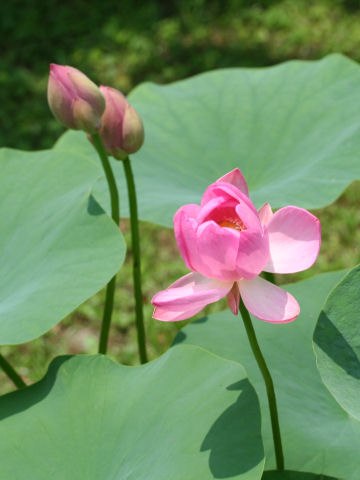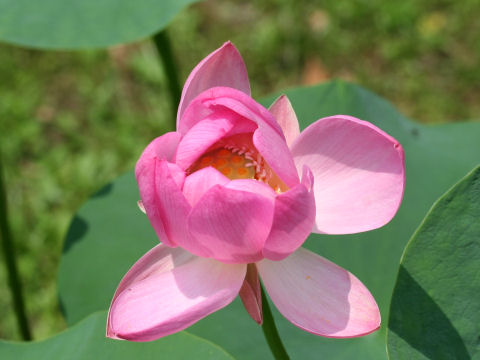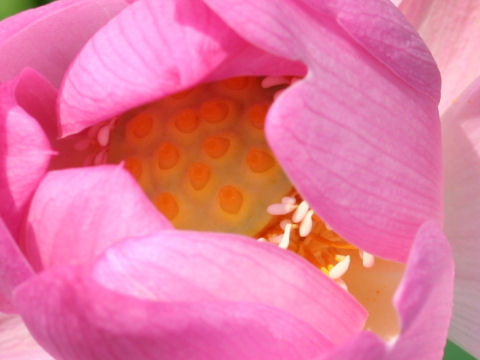
|
The "Ooga-hasu" (Nelumbo nucifera) belongs to Nelumbonaceae (the Lotus family). This "lotus" was discovered in 1951 at the University of Tokyo's Kemigawa Welfare Farm in Hanamigawa-ku, Chiba City, in a stratum approximately 2000 years old. This seed germinated the following year, grew steadily, and began to flower. It was later named "Ohga-hasu" in honor of its discoverer, Dr. Ichiro Ohga, and in 1954, it was designated a natural monument of Chiba Prefecture as "Ohga-hasu of Kemigawa". The flowers are single-petaled with 14 to 20 petals and bright pink in color. It is also known as "Kodai-hasu" (ancient lotus).
|




